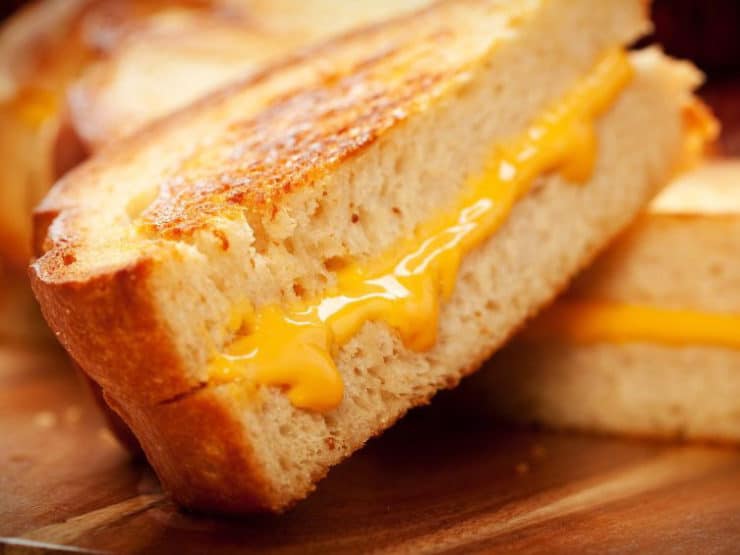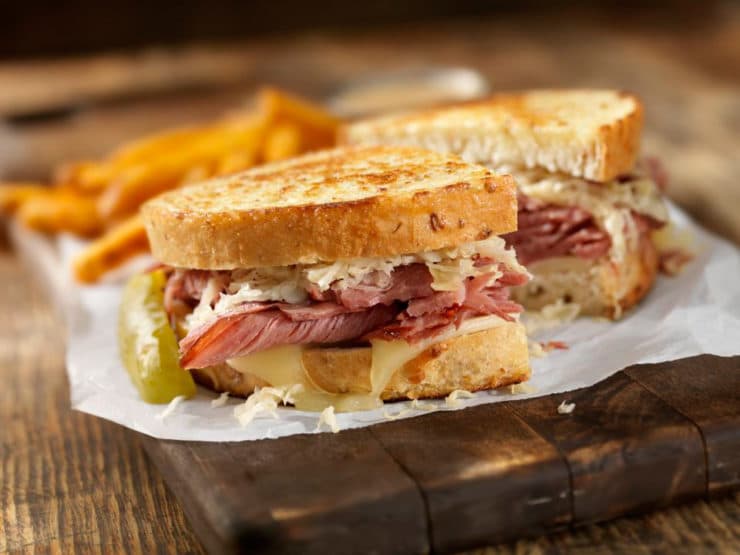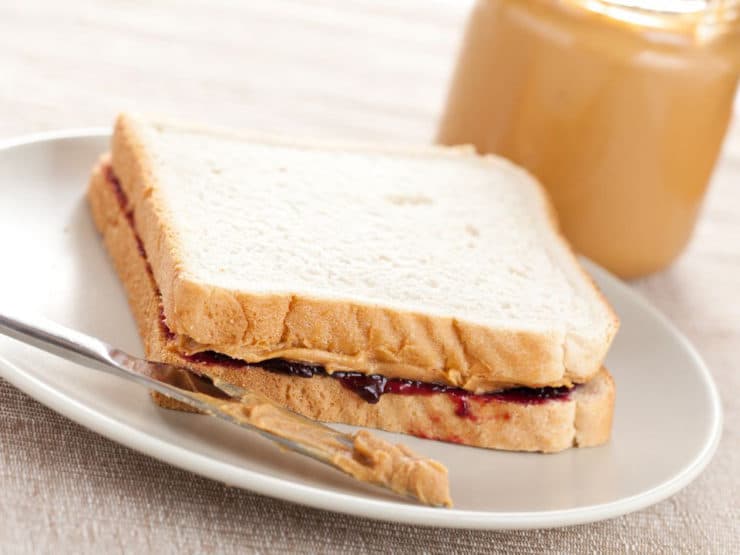
You know you’ve got a favorite one. The one that makes your stomach growl just looking at it. The one that you’d like to sink your teeth into. Maybe it’s a hot pastrami on rye with spicy mustard, or perhaps a grilled cheese is more your style. Or maybe you can’t resist a French Dip with tender, juicy meat on a French roll… yeah, THAT one. Americans eat close to 200 sandwiches per year on average, so chances are you have a favorite of your own. Whatever sandwich happens to float your boat, the basic components are bound to be the same. The Oxford English Dictionary defines a sandwich as “an item of food consisting of two pieces of bread with a filling between them, eaten as a light meal.” Seems like a simple enough concept. So, who came up with this innovative way of serving food? While I’m sure the Earl of Sandwich would like all the credit, the true history of the sandwich goes back much further.
Most of us have heard of the fourth Earl of Sandwich, otherwise known as John Montagu. In the late 1700’s, French writer Pierre-Jean Grosley recounted his observations of English life in a book called Londres (translated to English under the name A Tour to London). In the book, a few lines were written that forever tied this food invention to the Earl of Sandwich:
A minister of state passed four and twenty hours at a public gaming-table, so absorpt in play, that, during the whole time, he had no subsistence but a piece of beef, between two slices of toasted bread, which he eat without ever quitting the game. This new dish grew highly in vogue, during my residence in London; it was called by the name of the minister who invented it.
While it is not clear if this anecdote is completely true, the book gained popularity and the story took hold. Soon the name was official—when you ate two pieces of bread with something in the middle, you were eating a “sandwich.”

Edward Gibbon, author of The History of the Decline and Fall of the Roman Empire, is credited with being the first person to write down the word “sandwich” using its modern culinary context. On November 24, 1762, he wrote in his journal:
That respectable body, of which I have the honour of being a member, affords every evening a sight truly English. Twenty or thirty, perhaps, of the first men in the kingdom, in point of fashion and fortune, supping at little tables covered with a napkin, in the middle of a coffee-room, upon a bit of cold meat, or a sandwich, and drinking a glass of punch.
During the time this journal entry was written, Gibbon was First Lord of the Admiralty. The Earl of Sandwich, Montagu, was entrenched in London’s social scene. It’s possible that Montagu introduced the sandwich concept to his high society London friends, including Gibbon, who helped it to gain quick notoriety. In 1773, the word sandwich was used in a recipe for the first time, in Charlotte Mason’s cookbook, titled… now, stay with me here… The Lady’s assistant for regulating and supplying her table: Being a Complete System of Cookery, Containing One Hundred and Fifty Select Bills of Fare. That’s the condensed version of the title, if you can believe it.

Though the Earl of Sandwich (or, perhaps, his cook) deserves credit for helping sandwiches gain a name and popularity, variations of the concept have been around for centuries. It’s difficult to pinpoint exactly when or where they first appeared. Farm laborers in rural France had been eating meat between sliced bread long before it had a name, though the sandwich likely started even earlier than that. The earliest recognizable form of a sandwich may be the Korech or “Hillel sandwich” that is eaten during Jewish Passover. Hillel the Elder (born circa 110 BCE), a Jewish leader and rabbi who lived in Jerusalem during the time of King Herod, first suggested eating bitter herbs inside unleavened matzo bread. The herbs symbolized the bitterness of slavery, and the bread resembled the flatbreads made in haste by the ancient Israelites as they fled Egypt. Hillel’s simple recommendation of sandwiching the two foods together may indicate that this was already a popular way of serving food in the Middle East.
Sandwiches first appeared in American cookbooks in 1816. The fillings were no longer limited to cold meat, as recipes called for a variety of things, including cheese, fruit, shellfish, nuts and mushrooms. The years following the Civil War saw an increase in sandwich consumption, and they could be found anywhere from high-class luncheons to the taverns of the working class. By the end of the 19th century, sandwiches earned new names for their many different forms, like the triple-layered “club sandwich” and the corned beef “Reuben.”

In the late 1920s, when Gustav Papendick invented a way to slice and package bread, sandwiches found a new audience. Mothers could easily assemble a sandwich without the need to slice their bread, and children could safely make their own lunches without the use of a knife. The portability and ease of sandwiches caught on with families, and the sandwich became a lunchroom staple.
The Earl of Sandwich’s legacy lives on today in more than just the name. John Montagu’s great-great-great-great-great-great grandson Orlando Montagu founded a chain of sandwich restaurants called—what else?—Earl of Sandwich. The menu features an homage to the Earl’s first, most famous sandwich called the “Original 1762.” The sandwich includes hot roast beef, sharp cheddar, and creamy horseradish sauce served on warm bread.

Sandwiches are now popular all over the world, and it seems like every region has their own take on the concept. In Cuba, restaurants serve ham and cheese on Cuban bread. In the Middle East, falafel or shawarma in a pita pocket is the fast food of choice. In France, a Croque Monsieur or Croque Madame can be found in most cafes. In Italy, bread is toasted and placed in a hot metal press to make panini sandwiches. Vietnamese immigrants to the U.S. brought bánh mì with them. New Orleans celebrates the po’ boy. In New York, pastrami on rye is king, though the Reuben takes a close second. In Philadelphia, it’s all about the cheesesteak. Sandwiches come in endless varieties, making them one of the most popular foods worldwide.
So come on, fess up! What’s your favorite type of sandwich?
—
Research Sources
Bonnard, Georges (1966). Edward Gibbon: Memoirs of My Life. Thomas Nelson and Sons, London, UK.
Grosley, Pierre-Jean; Nugent, Thomas (tr.) (1772). A Tour to London; Or New Observations on England and its Inhabitants, by M. Grosley. Lockyer Davis, London, UK.
Rodger, N.A.M (1994). The Insatiable Earl, Fourth Earl of Sandwich 1718-1792. W.W. Norton, New York, NY.
Smith, Andrew F. (2007). The Oxford Companion to American Food and Drink. Oxford University Press, New York, NY.
Trager, James (1995). The Food Chronology. Henry Holt and Company, New York, NY.
Wilson, Bee (2010). Sandwich: A Global History. Reaktion Books Ltd, London, UK.



My favorite is pastrami on rye! Extra mustard.
Cannot make the 2 links above (Dickens / Chicken and Waffles) work …
They should be working now Di.
I can’t believe I’m doing this… King Herod ruled between 37-4 BC so he couldn’t have been around in 110 BC. Sorry to be so picky but these things bother me- especially on a history blog.
In other news, I absolutely love both of your blogs and really enjoy reading about the background of all kinds of interesting things!
Hi Archaeologynerd, thank you for your note. Hillel the Elder was born circa 110 BCE, and he is said to have lived through 10 CE. In consideration of these dates, he actually did live through the entire reign of Herod. I have clarified the post by placing his birthdate in parenthesis after his name, to avoid any confusion. Of course, dates like these are always somewhat speculative because they happened so long ago, hence the added “circa.” 🙂
Tori, when I was here yesterday, there were 23 other comments, and I came back for a second look, but can’t find them! Where can I look for them?
Perhaps you saw the comments on The Shiksa Facebook page? There were over 700 of them there, but all comments on this particular page are showing.
Debbie, the fried chicken sandwich is a very old soul food tradition. I first encountered it in the early 1980s in a soul food restaurant in Philadelphia while exploring for foods remote from my own heritage. It came in white wonder bread and consisted of 1/4 chicken, your choice of leg/thigh or breast quarter, and you were meant to pick it up in both hands and eat the bread and chicken with its wonderful crisp coating around the bones. You could order a side of greens with it. I’d gone in for such a late lunch that the owner was willing to chat with this white woman in a gray business suit (I was in industrial sale at the time) about the food. She said African Americans have always eaten fried chicken sandwiches exactly that way, with the Wonder bread and the bones. I liked it enough that I went back several times when working in that part of the city.
In comparison, the McD’s version is truly pathetic. Too dry, not nearly as good a coating, no choice of dark meat (always my strong preference), and none of those wonderful collard greens simmered with ham bone on the side!
The spouse and I make panini for dinner pretty much every Wednesday, because that’s the afternoon when I go to the farmers market to pick up our CSA basket, and we love to put fresh veggies on our favorite sandwich.
I may have to work up my bread recipe to share — it works really well… will keep you posted. 😉
Tori, i really enjoy this blog. My father who is turning 86 says when he goes through McDonald’s for his McChicken sandwich that you could have never have told people when he was a kid that there was going to be a friend chicken sandwich in the future. He said that if he would have said to his Mom or Grandma can I have a fried chicken sandwich they would have sent him off to the nut house. He is just amazed that someone came up with that idea and he seem’s kinda shocked that it is so good. I just find that so funny because I thought they had always been around. Do you know any history on the Fried Chicken sandwich so I could print it out and share it with Dad. Like who made the first fried chicken sandwich? I think of it kind of like schnitzel, I think that’s what you call pork patties coated and then fried. So I’m surprised they didn’t have fried chicken sandwiches here in the forties but Dad said he’d never had pizza until WWII in Rome. Then he came back and he said there was and Italian place on every corner. Thank goodness cause I love Italian cooking. Well you got plenty to do. I was just wondering if you knew about the fried chicken sandwich. Blessings to you, Debbie
Thanks Debbie! That is a great question. I’m actually considering starting a recurring feature this year that will explore the history of different sandwiches. I will put the fried chicken sandwich on the list! So happy you’re enjoying the blog. 🙂